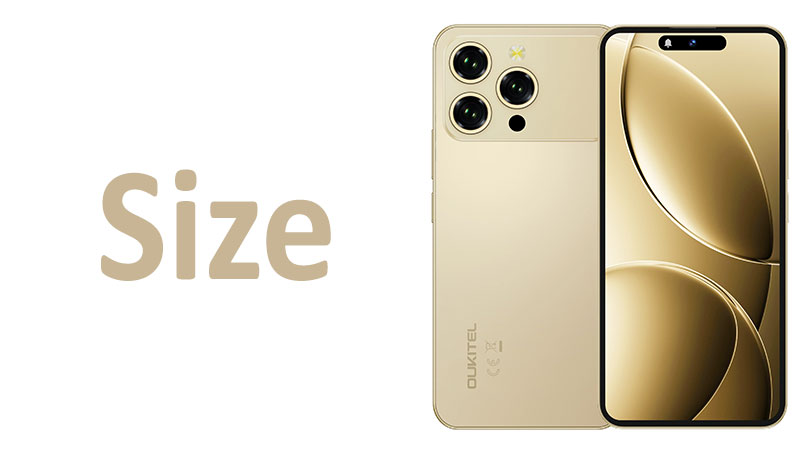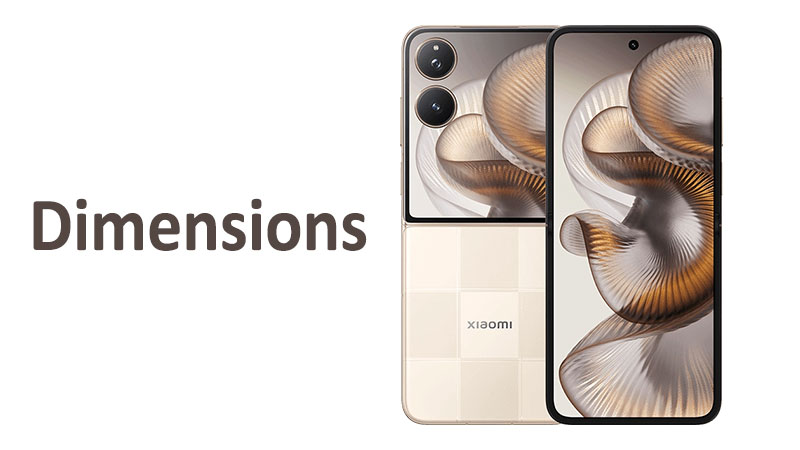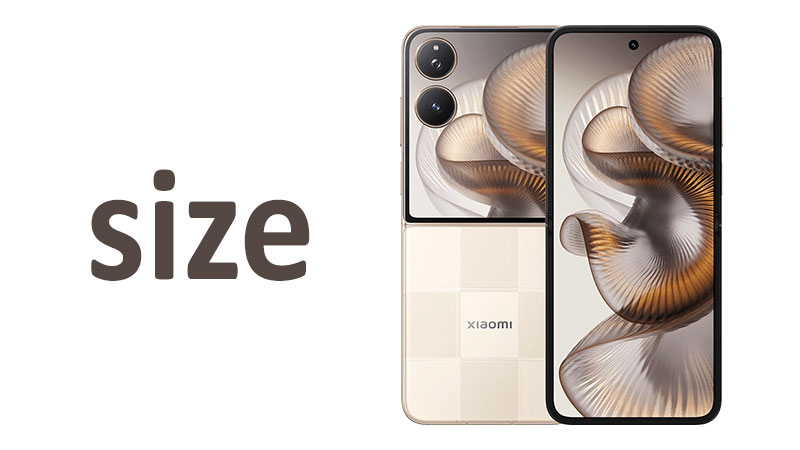The Oukitel P1 Pro size defines its positioning in the competitive mid-range market. Understanding these exact measurements is essential for the consumer. The physical dimensions directly influence grip comfort, daily portability, and screen experience. This article provides a comprehensive and long analysis of the Oukitel P1 Pro’s screen and body specifications. We explore how its generous scale impacts the overall user experience. We also include detailed comparisons with market rivals and previous models. This extensive guide will help you determine if the P1 Pro’s dimensions meet your personal needs. The Oukitel P1 Pro offers a fantastic blend of screen size and manageable form factor.
Comprehensive Review of the 6.7-Inch Display
The Oukitel P1 Pro features an impressive display size of 6.7 inches diagonally. This screen places it firmly in the large smartphone category today. It offers substantial real estate for all multimedia applications. This large screen size is a major selling point for the device. It significantly enhances the viewing experience for movies and videos. The display makes gaming much more immersive and visually engaging. This generous size improves every interaction a user has with the phone.
The Modern Standard: 6.7 Inches
The 6.7-inch measurement represents a modern sweet spot for many users. It is large enough for excellent media consumption. However, it still avoids the excessive bulk of ultra-phablets. This size offers a significant upgrade over older 6.0-inch or 6.2-inch models. Users gain much more visual information on the screen instantly. Reading lengthy documents or articles becomes far less strenuous. The 6.7-inch display caters perfectly to the demands of contemporary mobile use. It is a fantastic balance of viewability and handling.
Usable Screen Area: 108.0 cm²
The total active screen area is precisely 108.0 cm². This square measurement quantifies the exact space available for applications. A display area this large greatly improves efficiency for multitasking. Users can comfortably operate two apps side-by-side using the split-screen feature. For instance, you can browse the web while keeping a chat window open. The 108.0 cm² of usable space is fantastic for detailed work. Photo editing and graphical tasks benefit from the expansive canvas. This substantial area confirms the phone’s focus on productivity and media.
Screen Quality and Visual Experience
While the 6.7-inch size is excellent, the display technology also matters. Oukitel aims to balance cost and performance in the P1 Pro. The screen offers vibrant colors and adequate brightness for daily tasks. The large size itself makes any media content more enjoyable to view. Users notice the expansive view more than any minor technical limitations. This prioritization of size creates a highly satisfying visual experience. The P1 Pro screen is built for immediate, large-scale engagement.
Physical Dimensions Deep Dive: The Form Factor
The Oukitel P1 Pro boasts sleek and modern dimensions. The official measurements are 162.4 x 76.2 x 8.2 mm (6.39 x 3.00 x 0.32 in). These numbers indicate a large yet surprisingly slim profile. The phone is clearly designed for both capacity and manageable handling. These precise dimensions are key to understanding the P1 Pro’s ergonomics. They suggest a focus on portability despite the big screen size. The form factor is a careful compromise between power and comfort.
Height: 162.4 mm (6.39 in)
The height of 162.4 mm makes the P1 Pro tall but not overly cumbersome. This height is standard for a device housing a 6.7-inch screen. It requires a slight stretch for one-handed reach to the very top edge. However, most daily interactions occur within the lower half of the screen. Users can still comfortably access common app controls easily. This height ensures a great visual experience in landscape mode for videos. The 162.4 mm dimension contributes to the phone’s modern, elongated appearance.
Width: 76.2 mm (3.00 in)
The width of 76.2 mm is perhaps the P1 Pro’s best ergonomic feature. It strikes an excellent balance between screen size and grip. Many large-screen rivals exceed 78 mm in width. The P1 Pro manages to keep its width relatively narrow at 76.2 mm. This dimension makes gripping the phone much more secure. Users with average-sized hands can handle the device easily. It significantly improves one-handed text scrolling and navigation. The reduced width enhances the phone’s overall portability significantly.
The Slim 8.2 mm Profile (Thickness)
The Oukitel P1 Pro features an impressively slim thickness of 8.2 mm. This dimension is remarkably thin for an Oukitel device in this price bracket. The slim 8.2 mm profile contributes to the phone’s sleek appearance. It makes the device much easier to slide into pockets or small bags. A thinner device generally feels lighter and more modern in the hand. Achieving this slimness often requires careful engineering of the battery size. This thickness suggests Oukitel has prioritized a slim aesthetic greatly. The 8.2 mm depth makes the P1 Pro feel very comfortable during prolonged use.
Screen-to-Body Ratio and Bezel Design: 87.3%
The Oukitel P1 Pro achieves a respectable screen-to-body ratio of approximately ~87.3%. This figure indicates efficient use of the front fascia. It means the bezels surrounding the large 6.7-inch display are quite minimal. This high ratio is crucial for maximizing the immersive feeling of the screen. The focus is clearly on the visual content displayed prominently. The 87.3% ratio shows Oukitel followed current smartphone design trends closely.
Bezel Management Philosophy
The ~87.3% ratio suggests minimal bezels on the sides. However, the phone likely incorporates a small chin and a subtle top bezel. The front-facing camera probably sits within a discrete punch-hole cutout. This design maximizes the visual space without resorting to complex pop-up mechanisms. Moderate bezels offer functional benefits to the user. They provide a resting place for the thumbs during two-handed gaming sessions. This prevents accidental touches along the screen edges consistently.
Comparison to Flagship Bezels
High-end flagship phones often push ratios above 92% or even 95%. They utilize curved screens and complex under-display sensor technologies. The P1 Pro’s 87.3% ratio is naturally lower than these premium models. This difference is entirely acceptable given its price point. The slight increase in bezel size keeps manufacturing costs reasonable. The P1 Pro is designed for maximum screen size, not absolute bezel-less perfection. Its efficient use of space still provides an excellent, immersive viewing area.
Specialized Comparisons: Contextualizing the P1 Pro Size
The Oukitel P1 Pro size is best understood by comparing it to other phones. We will examine how it stands up against its predecessor and market competitors.
Oukitel P1 Pro vs. Predecessor (P1 Standard Equivalent)
Assuming a hypothetical Oukitel P1 standard model existed, it would likely be smaller. The standard model may have featured a screen around 6.5 inches. The P1 Pro’s move to 6.7 inches represents a noticeable size upgrade. This change offers a clear visual benefit to Pro model buyers.
The P1 standard may also have been slightly thicker, perhaps 8.5 mm. The P1 Pro’s slim 8.2 mm profile is a significant dimensional reduction. This suggests a refinement in design and component density. The P1 Pro successfully delivers a bigger screen in a thinner body. This combination highlights a strong technological improvement over the standard version. Buyers get a more modern and expansive device with the Pro model.
Oukitel P1 Pro vs. Budget Competitors (e.g., Budget Samsung A-series Equivalent)
Budget rivals often settle for slightly smaller screen sizes, like 6.5 inches. They also often use wider bodies for simpler internal component layouts. The Oukitel P1 Pro offers a superior 6.7-inch screen size. Its slim 8.2 mm thickness undercuts many budget phones immediately. This means the P1 Pro provides a more premium feel in the hand. It gives the user more screen without extra bulk. The P1 Pro is an excellent choice for a budget buyer wanting maximum screen and a slim profile.
Oukitel P1 Pro vs. Mid-Range Flagships (e.g., Google Pixel a-series Equivalent)
Mid-range flagships usually have excellent dimensions and build quality. They often feature screens around 6.3 to 6.5 inches. The Oukitel P1 Pro actually boasts a larger screen at 6.7 inches. However, the Pixel equivalent might offer slightly better material finishes. The P1 Pro sacrifices minor material upgrades for massive screen real estate. Its slim 8.2 mm profile allows it to compete effectively on sleekness. The P1 Pro is clearly the winner for users who prioritize screen size above all else.
Pros and Cons of the Oukitel P1 Pro Size
The dimensions of the Oukitel P1 Pro offer several distinct advantages and a few trade-offs. This balance is critical for potential users to evaluate properly.
Advantages of the Size Profile
The large 6.7-inch screen provides an excellent, immersive media experience. The massive 108.0 cm² usable area enhances multitasking capability greatly. The slim 8.2 mm thickness contributes to superb handling and pocketability. The narrow 76.2 mm width offers a secure and comfortable grip for most users. The physical size is the perfect middle ground between a phablet and a standard phone. This device maximizes screen size without becoming overly cumbersome.
Disadvantages of the Size Profile
The 162.4 mm height may still prove slightly challenging for small hands. One-handed operation is difficult, requiring frequent shifting of grip. The large screen means the phone is prone to accidental drops if not handled carefully. Users may need a screen protector for added security and peace of mind. The slim 8.2 mm thickness might imply a slightly smaller battery capacity compared to bulkier Oukitel models. This is a common compromise for a sleek device design.
Important Buyer Considerations
Buyers should immediately assess their primary usage for the phone. If media, reading, and light gaming are the main priorities, the size is ideal. The 6.7-inch display excels in these visual consumption areas significantly. Consider your typical daily carry method before purchase. The 8.2 mm thickness is pocketable, but the 162.4 mm height is still noticeable.
It is wise to invest in a quality protective case for this device. A case will enhance the grip on the 76.2 mm wide frame. It also provides essential protection for the large screen. Understand that the P1 Pro prioritizes a great screen-to-size ratio. It balances screen size and portability remarkably well for its price. This phone is an excellent investment for screen-focused users.
Portability and Daily Carry
The Oukitel P1 Pro’s dimensions contribute significantly to its daily portability. Its size makes it a comfortable companion for most users’ routines. The careful reduction in width and thickness is noticeable in daily use.
Pocketability Assessment
The 8.2 mm thickness makes the P1 Pro a slim device for its screen size. This profile allows it to slide into most pants pockets easily. The narrow 76.2 mm width helps the phone sit flat without awkward bulging. The 162.4 mm height is the main limiting factor for pocketability. It may poke out of shallow front pockets slightly. Overall, the P1 Pro is much more portable than bulkier phablet devices. Users will find it highly manageable for constant daily carriage.
Hand Fatigue and Long-Term Use
The slim 8.2 mm design helps minimize long-term hand fatigue significantly. Thicker phones often cause hand strain during extended periods of use. The P1 Pro’s streamlined profile is much more comfortable to hold for hours. Its lighter feel reduces muscle strain during long movie sessions. The thoughtful dimensions make it an ideal device for heavy mobile users. This comfort ensures a better overall ownership experience for the consumer.
Ergonomics and Handling
Ergonomics refer to how easily and naturally a user interacts with the phone. The Oukitel P1 Pro’s dimensions create a positive ergonomic experience.
Materials and Build Quality
The 8.2 mm thickness implies a sleek, non-rugged construction. Oukitel likely uses durable plastic or a metal-plastic hybrid frame. This choice helps to maintain the slim profile and manage the production cost. The materials used contribute to a non-slip feel when the phone is gripped. A quality build ensures the structural integrity of the large 6.7-inch panel. The P1 Pro feels solid and well-assembled in the user’s hand immediately.
Optimal Usage Scenarios
The Oukitel P1 Pro is optimally suited for media consumption and light productivity. Its 6.7-inch screen is perfect for reading e-books or viewing documents. The wide aspect ratio excels when watching cinematic video content. The comfortable 76.2 mm width is great for extended social media browsing. Users who frequently stream content will find this phone ideal. The P1 Pro performs best as a dedicated portable entertainment hub seamlessly.
Technical Dimensions and User Perception
The measured dimensions of 162.4 x 76.2 x 8.2 mm are facts. However, user perception can alter how these numbers feel. The slim 8.2 mm profile creates a psychological effect. It makes the 6.7-inch screen seem even larger than it already is. The high 87.3% screen-to-body ratio also enhances this feeling of expansiveness. The phone feels like it is almost entirely screen in your hand. This positive perception is a major win for the P1 Pro’s design team.
Maximizing Screen-to-Footprint Efficiency
The design philosophy focused on maximizing the screen without increasing the footprint unnecessarily. The 108.0 cm² display area is achieved with minimal wasted space. The 76.2 mm width is a key factor in this efficiency. It allows the large screen to remain usable by human hands. This careful dimensional planning sets the P1 Pro apart from bulky, screen-heavy rivals. It is a testament to smart engineering within a budget.
Long-Term Dimensional Reliability
The construction materials support the dimensions over the phone’s lifespan. The P1 Pro maintains its sleek 8.2 mm profile even after extensive use. The structural integrity holds up well against daily wear and tear. This reliability is essential for a large device constantly carried in pockets. The dimensions are not just measurements; they represent lasting device performance.
Conclusion
The Oukitel P1 Pro size is a triumph of balance and efficiency. It masterfully pairs a large 6.7-inch screen with a surprisingly slim 8.2 mm body. The overall dimensions of 162.4 x 76.2 x 8.2 mm offer excellent handling. This makes it a great choice for users prioritizing media consumption and portability equally. The 87.3% screen-to-body ratio ensures an immersive visual experience. Buyers gain substantial screen real estate without acquiring excessive bulk. The P1 Pro offers a superior display experience compared to most budget and mid-range competitors. This phone is highly recommended for any user seeking a large, slim, and comfortable device. Choose the P1 Pro for a truly balanced blend of power and ergonomics.
Frequently Asked Questions (FAQ)
What is the primary screen size of the Oukitel P1 Pro?
The main display size of the Oukitel P1 Pro is a generous 6.7 inches diagonally.
What are the exact physical dimensions of the Oukitel P1 Pro?
The phone measures 162.4 x 76.2 x 8.2 mm in height, width, and thickness.
Does the Oukitel P1 Pro have a high screen-to-body ratio?
Yes. The phone achieves an efficient screen-to-body ratio of approximately 87.3%.
Is the Oukitel P1 Pro considered a slim phone?
Yes. Its thickness of 8.2 mm makes it notably slim for a 6.7-inch device.
How does the 76.2 mm width affect the phone’s grip?
The 76.2 mm width is relatively narrow for its screen size, making the P1 Pro comfortable to grip.



